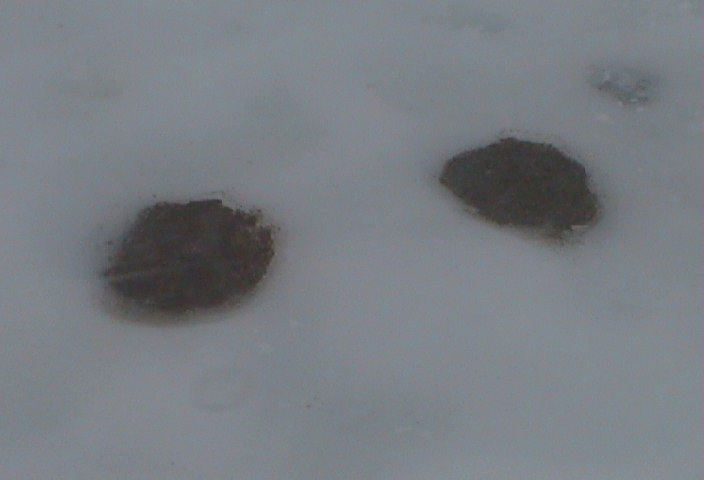
THE EXPERIMENT
In December 2003 we deposited a thin layer of sediment ~1cm in a hole 10 cm in diameter and 2 cm deep on Canada Glacier in the McMurdo Dry Valleys of Antarctica.
A time lapse camera was trained on the sediment patch about 1 hour after deposition. Photos were taken at 10 minute intervals. The sediment patches were about 10 cm in diameter.
The video shows the development of the hole from December 4, 0450 to December 5, 2205. a total duration of 41.25 hours. Air temperature averaged -1.2 oC during the video, with a peak of 0.1oC and a minimum of -2.4oC.
The time lapse will cycle three times. Press the refresh button for another cycle of three.

Observe how the sediment moves down the walls of the hole as the hole deepens through melt. Quickly an ice lid freezes over the sediment and as the hole continues to deepen air enters along the water-ice interface creating a "head space" between the water and ice. This can be seen as the cryoconite hole develops a grey appearance instead of the dark color of the sediment.
By the end of the 41 hours, the surface of the cryoconite hole looks very similar to the ice surrounding the hole.
It should be noted that during this time of year, the sun is up for 24 hours a day. The shading is due to the surrounding mountains blocking the direct sunshine.
The time lapse pictures were acquired
from an automatic camera designed by Tony Hansen
and the deployment and implementation were supervised by Thomas Nylen and Joe
Mastrionni.
The gif movie was made by Jon Ebnet.